The alarm went off at 0500 and I was up in a flash, and on the road to RAAF Base Tindal by 0530. Today was going to be one of those days that only come along on rare occasions.
The occasion?…. An opportunity to speak to four key personal involved with the first Enhanced Air Cooperation activity to be conducted in Australia. Not only that, I was going to see both the United States Air Force F-22 Raptor and a Royal Australian Air Force F/A-18A Hornet close up.
Arriving in Katherine, 330km from home, a coffee and fuel stop was in order before driving the 15km to RAAF Base Tindal.
After meeting FLTLT Stephanie and FLGOFF Dea at the security gates, we boarded a bus which transported us into the restricted, operational area of the base. As we arrived outside the Air Movements building, I could just make out a couple of sharp edged fins protruding from the surrounding vegetation. Definitely not the shape of an F/A-18 tail that I was familiar with.
We were welcomed into the building by Marnie from Department of Defence Public Affairs and shown through to the apron.
Parked right there in front was a USAF F-22 Raptor, the Commanding officer’s personal aircraft, and a RAAF F/A-18A Hornet nose to nose and in front of the aircraft and standing in the hot sun waiting for us were our hosts:
Wing Commander Andrew Tatnell -Senior Australian Defence Officer RAAF Tindal
Wing Commander Michael Grant – 75 Squadron Commanding Officer
Lieutenant Colonel David Skalicky – USAF 90th Fighter Squadron Commander
Flight Lieutenant William “Gradz”Grady – Hornet pilot on exchange to the 90th Fighter Sqn
The film crew set up their camera while we waited for the C-17 from the 517th Airlift Squadron to shut down it’s APU. This C-17 Globemaster III is one of the support aircraft for the 90th FS while in Australia, and is also based out of Elmendorf, Alaska. It has been shuffling equipment and personnel around in support of the detachment, including down to Avalon.

KC-135R Stratotanker from 173rd ARS, 155th ARW, Nebraska ANG
In addition to the C-17 a pair of KC-135Rs have been supporting the 90th in both local air to air refuelling plus transiting across and back to Townsville in Queensland. One from the 173rd Air Refuelling Squadron, 155th Air Refuelling Wing, Nebraska, Air National Guard and another from the 72nd Air Refuelling Squadron, 434th ARW, Grissom AFRC, Indiana.
First up to speak and welcoming us was Wing Commander Tatnell, the senior ADO who explained – “This opportunity provides the Enhanced Air Cooperation between the Australia and the US where we get to train and work together to validate what we do, and from that, we can in the future, be better prepared to support any requirement that is tasked of us. The F-22 has been able to come to Tindal in its current form and we are well developed to support all fighter operations from this air base. It’s a great place, lots of clear airspace to fly around in and down the road we have Delamere Air Weapons Range. There they can operate over that range unimpeded and not bother anyone in the Northern Territory.”
He then handed over the speakers position to Wing Commander Michael Grant CO of 75 SQN who said “It’s an absolute pleasure to be hosting the 90th Fighter squadron here, this and next week. It’s no mean effort to bring a squadron down from Alaska and we are really excited to have them here operating in our back yard” He goes on to say “It is a real privilege to have Australia involved with a 4th Gen – 5th Gen mix. In previous years we have had to have squadrons deployed over to places like Alaska or Nevada to participate in exercises such as Red Flag. Those exercises can have over 100 aircraft in them and we don’t always get to work directly with F-22s when we are there. So it is a real privilege that the 90th and 75 sqn operating solely here at Tindal over these next two weeks.”
WGCDR Grant continued on to explain the focus is purely on interoperability and integrated tactics taking the absolute strengths of the 4th generation aircraft and combining them with the huge strengths of the 5 generation aircraft, bundling them together to deal with the scenario threats presented at the moment.
“This is really important, as Australia progresses into a fifth generation Air Force, we’re going to face the exact same scenario as we have here. As the F-35 comes online in a couple of years, that transition won’t happen overnight. So while this cooperation between 75 and the 90th is fantastic, it is also critical for Australia as we will have F-35s and F-18s (4th and 5th Gen) operating in the same scenario. We will need to be good at it, and so we are getting that valuable training this week”.
I remember when working at 75 Sqn that both 75 SQN and the 90th Tactical Fighter Squadron (as they were known back then), had flown together previously in the Northern Territory. Exercise Pitch Black in 1987 saw the two squadrons, one flying the Mirage III and the other the Phantom F-4E/G, both performing in mock battles in the skies over the N.T. A plaque remains commemorating their visit on the wall in the old RAAF Base Darwin operations room.
WGCDR Grant continues on the historical relation ship between the US and Australia – “75 and the 90th have a rich and long history both being ‘born’ around the early 1940’s dealing with the conflict in the Pacific. Fast forward seven and a half decades and I find myself overseas on operations side by side with the 90th very recently in theatre, and this week we’re back together again in a significant exercise, testing our integration and interoperability. It is with great pleasure I introduce the Commanding Officer of the 90th”.
Lieutenant Colonel David “Zeke” Skalicky steps up to the microphone and begins by telling us they have brought 12 F-22s and about 240 airman down to Tindal to integrate with 75Sqn.
“This exercise provides the unique opportunity to integrate down at the unit level in smaller packages – we have integrated in large combat operations and exercises before, but this exercise allows us to delve into the smaller scale tactics and individual execution of each pilot to make us better as a team. What that does for us, it makes us a better postured to meet with emerging threats or anything happening in the future – a better coalition to meet the challenges of the future.
What we have with us is the C-17 cargo aircraft and a KC-135R refuelling aircraft and while we focus on fighter to fighter integration, there’s a whole logistics side to the EAC. In bringing those logistics forces down we have seen that the interoperability of the fighters, logistics, security forces and maintenance functions that WGCDR Tatnell is in charge of. All those parts of our services interact very well and we are seeing the synergistic effects of combining our efforts.”
“For me, its been an absolute pleasure to get to fly with the 75 squadron again, getting to match our F-22 and F-18 capabilities together in a training environment, but also it’s been neat to see the logistics of both our sides working together. To see all that come together has been phenomenal”.
“We have a long tradition of integrating with Australia and that goes all the way back to WWII when the 90th Bomb Squadron at the time was operating out of Northern Australia. More recently we’ve had an Australian exchange pilot in the “Dicemen” as part of my squadron. I’ve got him here today, he has been a phenomenal asset, and an integral part of the Dicemen for the last several years and so I would like to introduce FLTLT William Grady”

Flight Lieutenant William “Gradz”Grady – speaking on his experience as an exchange pilot to the 90th FS
Flight Lieutenant William “Gradz”Grady moves forward and although wearing his RAAF ranked flight suit, it bears the patches of the ‘Pair-o-Dice’ (90th FS), Pacific Air Forces, and his “Gradz Grady ‘Dicemen’ name badge. FLTLT Grady does however retain his RAAF FCI patch on the left shoulder.
He also sports the coveted pair of dice awarded to all pilots of the 90th Fight Squadron.
“ I arrived at the 90th Squadron in November 2014 and I will likely depart in December this year. So its about a three year tenure in total. The idea behind the exchange is for a RAAF pilot normally from Air Combat Group, to be converted to type and taken across to Alaska to fly integrated with the pilots at that squadron. That involves daily training, daily ground training, participating in the exercises that we have in Alaska, and of course it involves travelling across the United States and overseas as required to do so in those exercises and deployments WGCDR Grant talked about earlier”
“The premise of the exchange from an Australian perspective is to gain a good, solid understanding of 5th generation fighter flying, to bring those tactics and techniques back to Australia so we can stand up that integrated and technical force that we are desiring in Australia with the E7, Super Hornet, Growler and eventually the F-35. So it’s a fantastic opportunity for me personally and professionally to be part of it and bring that knowledge back.”
He goes on to say “ From the USAF side I would hope they gain a highly experienced fighter pilot into their squadron as well, hopefully they get a different perspective of how to achieve a mission or a task we are up against every day. So ultimately it comes down to that interoperability, that cross service we talked about earlier, and doing it over a longer term to achieve the goals we are after as an integrated force.”
Lieutenant Colonel Skalicky says “ What FLTLT Grady talked about – his contribution to the 90th and USAF, well…he is being a little modest in that. He was actually our squadron’s Instructor Pilot of the Year, an award he won from the entire 3rd Wing, which is about five squadrons worth of different aircraft. So he is an absolute asset not only to the 90th, 3rd Wing, but the United States Air Force and we are honoured to have him flying along side of us.”
“The exercise we are conducting is actually one that FLTLT Grady built – a rolling fictitious scenario involving some high end threats that optimise the capabilities of the F22 and F18 to show what we can really do. It has problems that the F-22 can’t solve on its own and problems the F-18 can’t solve alone. So it forces us to combine and realise that interoperability and what we can do together as a team.”
“The F22 is probably the most advance aircraft we have in the USAF but this exercise is not just about their unique capabilities, we realise that due to the numbers of F-22’ we have, we are much more effective when we bring in our coalition partners and their assets, like the 2 Squadron E7 Wedgetail and alone we can’t accomplish these scenarios but together we can”.
Australia has been participating in the bi-lateral pilot exchange programme with the USAF for years. Australian fighter pilots have been embedded in Navy F/A-18As, Air Force F-15C/Es, F-16s, and F-22s. with pilots The first F-22 exchange pilot was Squadron Leader Matthew Harper who was a F-22 instructor pilot and was the 90th EFS officer in charge of scheduling and training. Sqn Ldr Harper began his exchange posting starting in late 2008.
With regards to Townsville – “We were in Townsville twice in the past weeks….” He pauses as a flight of F-22s perform their initial and pitch overhead prior to landing. “What we were looking at there was this logistical side of the operational initiative – its really about demonstrating that we do very well in the logistics side , not just the fighters. What that gave us was that we know that we have the capability to meet say, humanitarian crisis, earthquakes, tsunami’s , something like that, We know we can go to a RAAF Base, know the kind of support we’re going to get.”
We watch the F-22s land and taxi past to their parking bays on the apron behind the Parked C-17.
I have a chance to ask Lieutenant Colonel Skalicky what celebrations he has planned for their 100th birthday later in the year. he said “We are planning a few celebrations back in Elmendorf – a night where we all get dressed up in our uniforms (USAF dress code), a large dinner function. We are also trying to organising a cruise, glacier cruise. It’s a big occasion – well the first 100th birthday for us – a long time since that original formation of the 90th at Kelly Field (Texas)”
I asked him what triggered his interest in an aviation career – “Ever since I was a kid, its all I ever wanted to do. In fact I still have a little Dr Seuss book, and it has writing in it from when I was a kid, one of the last things in it – ‘when I grow up I want to be’ – and I wrote in there with a backwards letter or two – PILOT – and so here I am. In my career I have flown just the trainer aircraft and the F-15C then the F-22. I’ve got a little over 2000 hours time in those two aircraft. The conversion from F-15 to the F-22 can be relatively short, a few weeks in the simulators plus classroom time is all it can take for a really experienced pilot to take his first flight”.
We mingle and I ask Wing Commander Grant whether 75 Squadron has finalised details for it’s up coming 75th celebration, He says they aren’t all set in concrete yet as the squadron has some flying commitments at the same time as the birthday. But should be sorted soon.
Just then some returning 75 Sqn Hornets initial and pitch above us, land and taxi past behind the two parked aircraft, and then off towards their OLA’s. Such a great sight, sound and smell that I do miss from my own days at 3 Squadron RAAF Base Williamtown. The 3 Sqn aircraft, A21-13 on loan to 75 Sqn passes behind and he joking asks me not to photograph it – “You should be taking pics of of our Magpie aircraft” he says with a grin.
As the Wing Commander finishes an aircraft integral to this EAC The E-7A Wedgetail AEW&C lands and gracefully taxies past us to it’s parking slot. One of the quiet achievers in the RAAF inventory.

Friend and Foe in some of the training scenarios – E-7A and F-22, both very capable in their own right.
Once the Wedgetail has move out of earshot Flight Lieutenant Grady continues to describe flying the F-22 – “To fly the F-22 is just unbelievable, its a fantastic jet, who can complain about having super-cruise, super manoeuvrability, integrated avionics and stealth of course. Its one of this aircraft you can’t ‘blame your tools’ on anymore, one of the down side to debrief (as he smiles) . To Fly, you go up there, race to 50,000 feet and at Mach 1.3. It makes it incredibly challenging but also fantastic to go to work every day.”
I watch as a USAF maintenance hook up a tow motor and tow bar to one of the Raptors and proceeded to move it from the apron to the OLA’s after it had shut down earlier.
With regards to bringing his skills from Alaska back to Australia – “ We are getting the JSF, F-35 and whilst this exchange isn’t directly supporting that, all the experience and the lessons we have from operating with the USAF, flying the F-22, will be interchangeable with the F-35. So we will be able to bring those lessons back, develop them and stand up the F-35 as soon as possible. The end state Australia is looking for is a highly technical, integrated force leveraging off the E-7, Super Hornet, Growler and that F-35 mix in there as well. With those components we should be punching above our weight.”
The final flight of F-22s fly over and land in trail on RAAF Base Tindal’s 2744m runway.
I watch mesmerised as they again taxi past on their way to the OLA’s.
Finally as the last Raptor taxi’s to it’s lair it is time to wrap it up – all of us feeling the heat a little after an hour and a half in the Top End’s blazing sun.
I shake hands and thank the pilots and CO’s who gave me their valuable time to open a window into their exciting world.
Wing Commander Andrew Tatnell -Senior Australian Defence Officer RAAF Tindal
Wing Commander Michael Grant – 75 Squadron Commanding Officer
Lieutenant Colonel David Skalicky – USAF 90th Fighter Squadron Commander
Flight Lieutenant William “Gradz”Grady – Hornet pilot on exchange to the 90th Fighter Sqn
Meandering back into the Air Movements building I begin reflecting on what has been an experience I won’t forget for a long time. YES! – I have seen a F-22 Raptor up close.
I would like to thank Marnie from DOD Public Affairs, for the opportunity to attend this unique event, and FLTLT Stephanie, FLGOFF Dea and CPL Kelly for getting us safely to and from the location.
Cheers… Sid Mitchell
I use Nikon D7100, 18-55mm, 50mm, 70-200mm and 200-500mm, Sandisk cards.


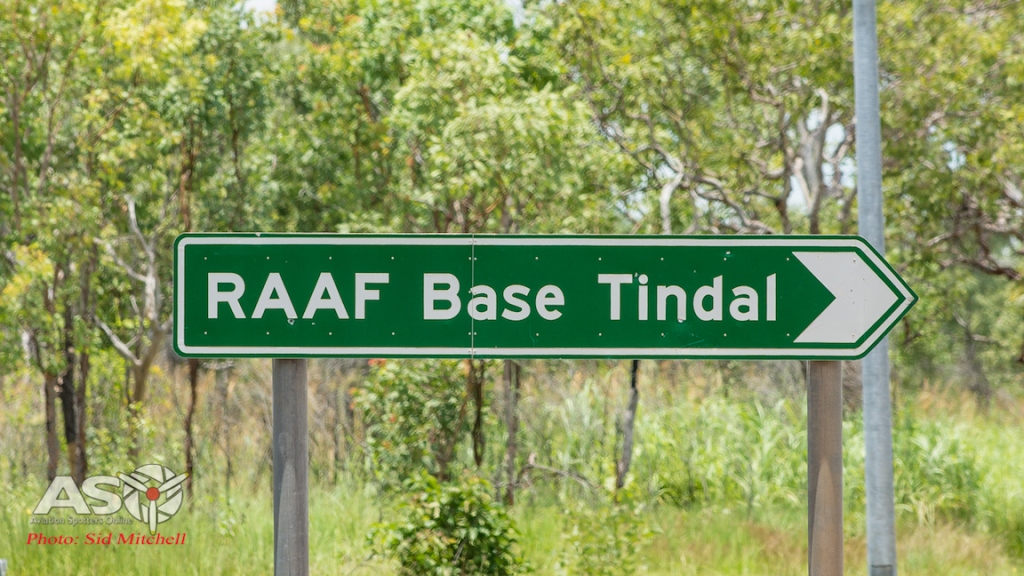



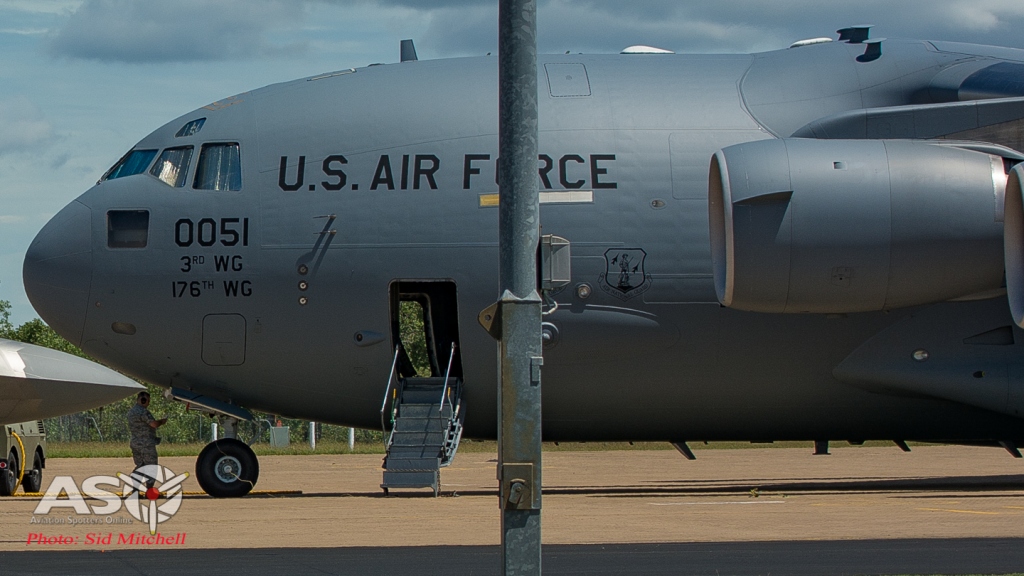


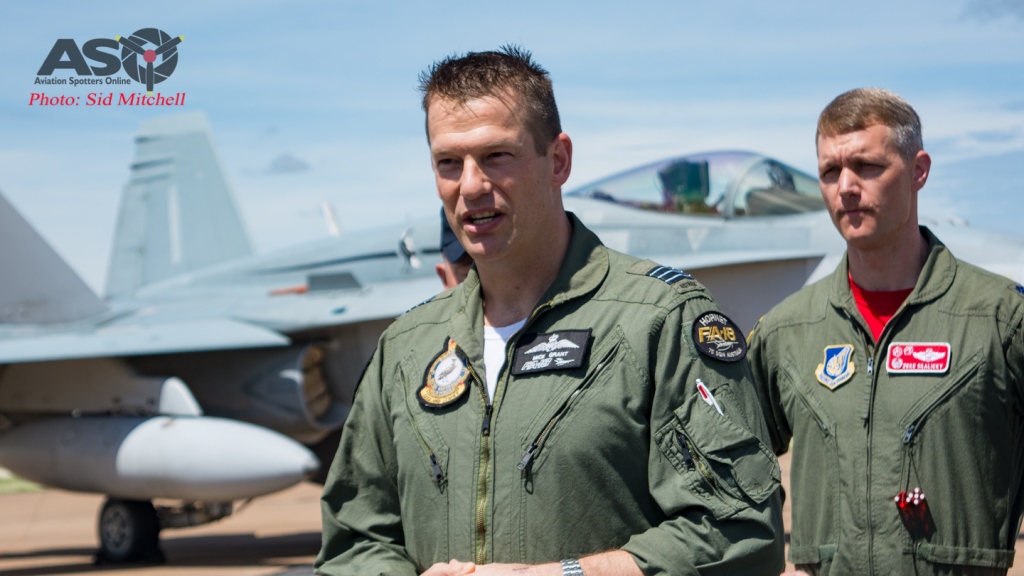





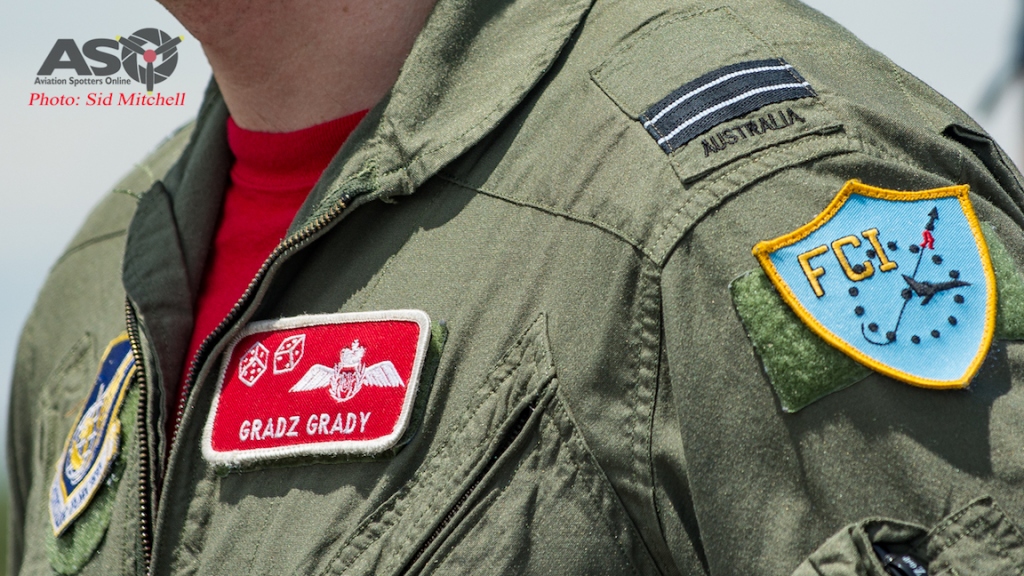





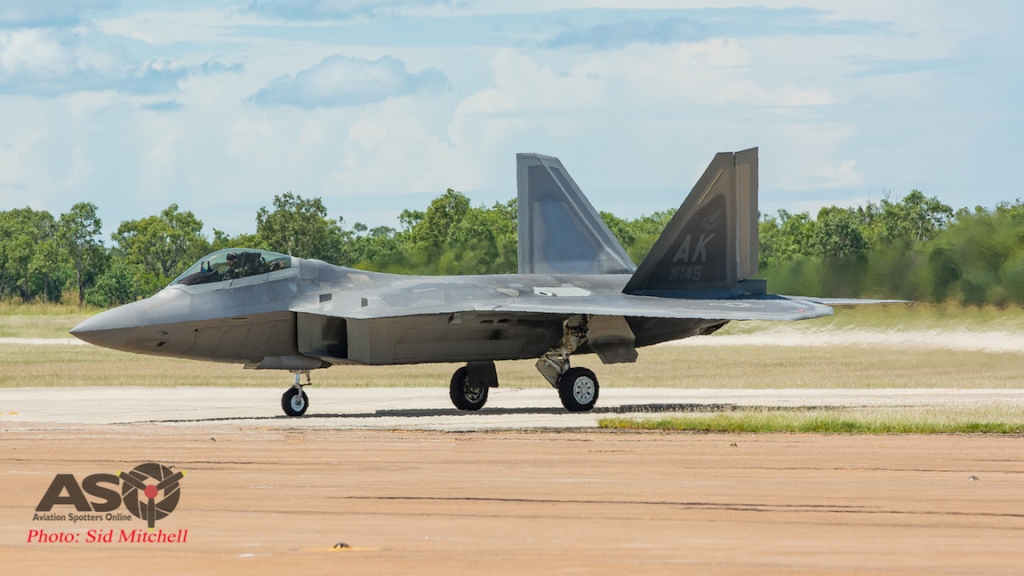
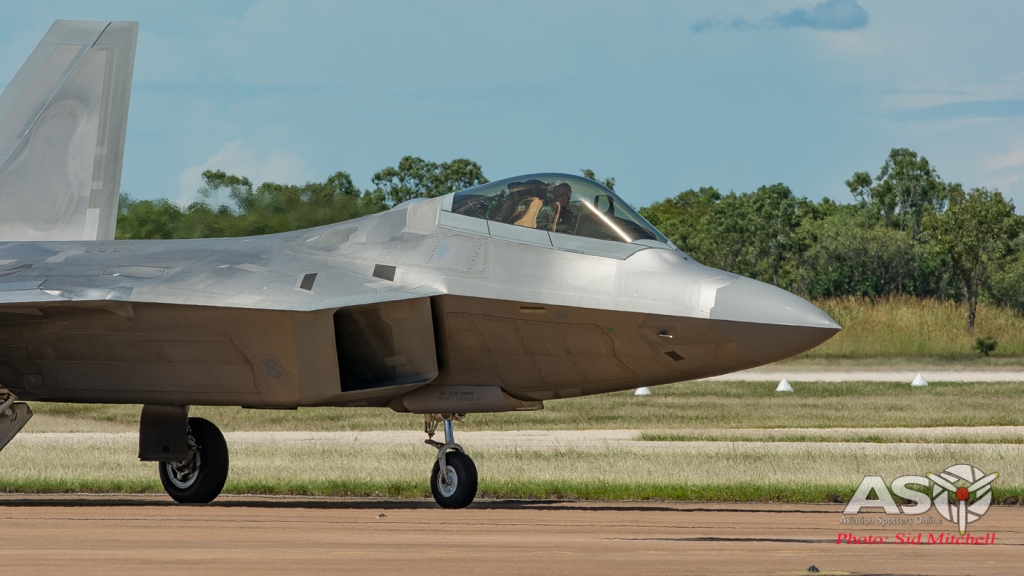
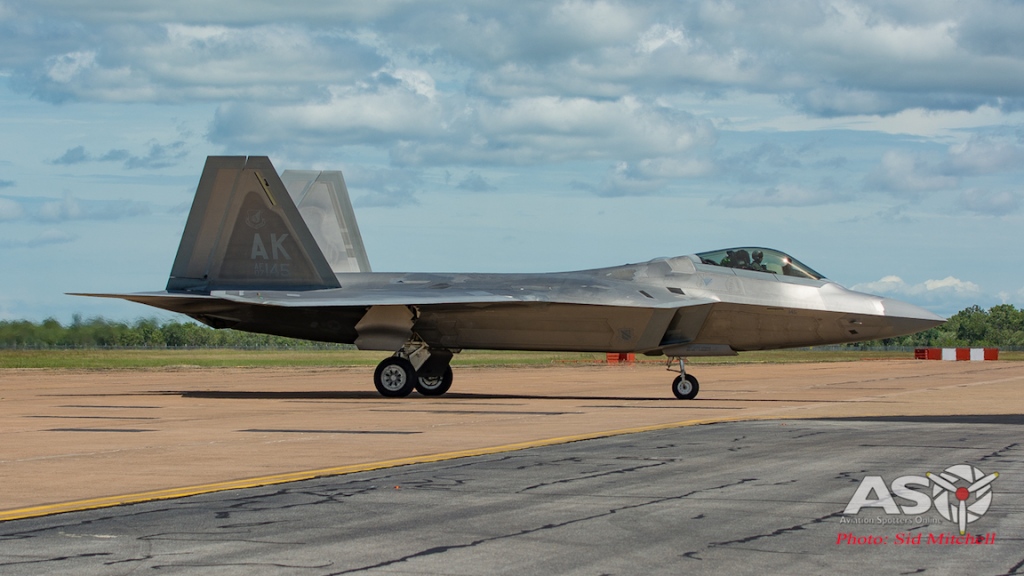





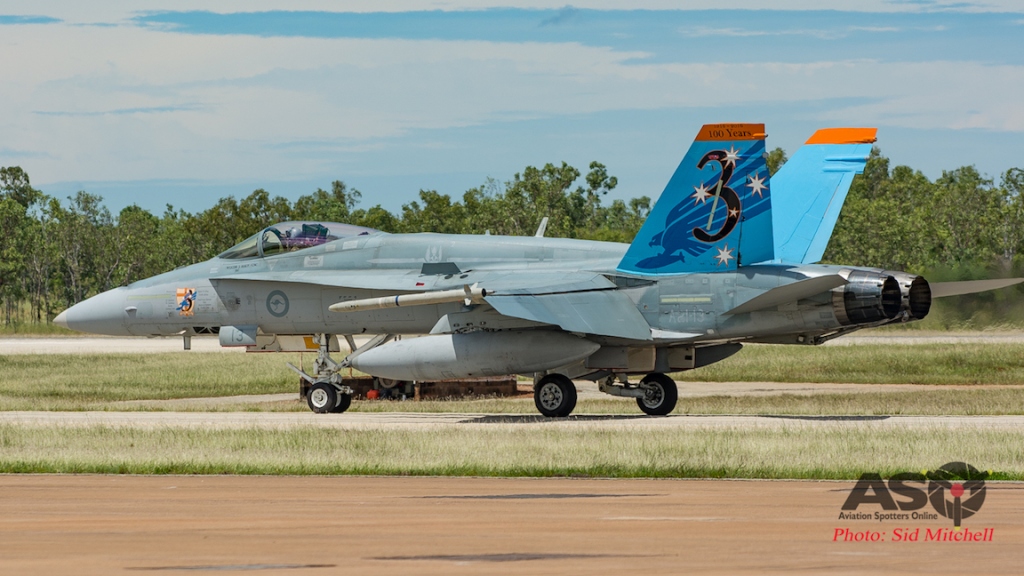



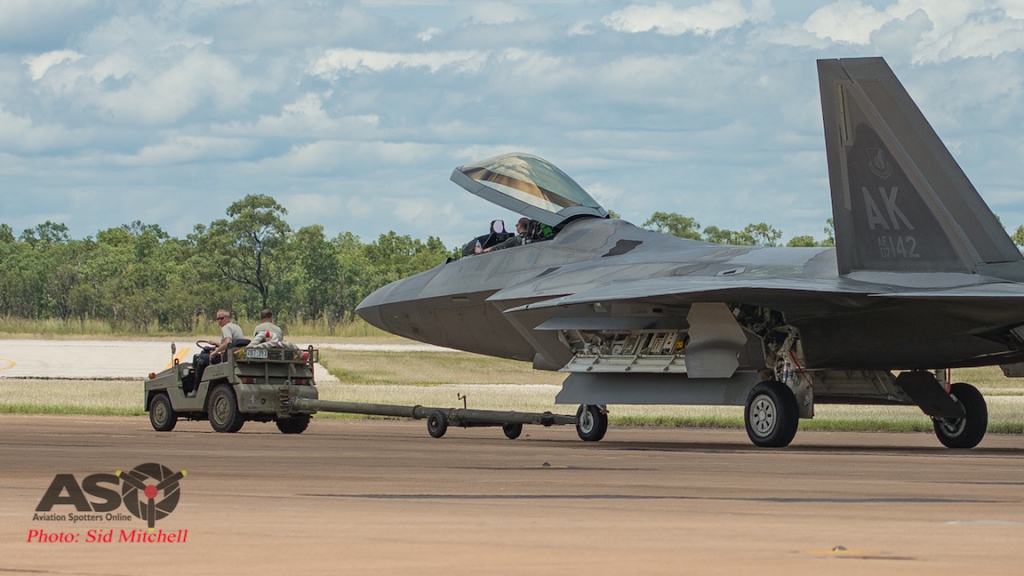
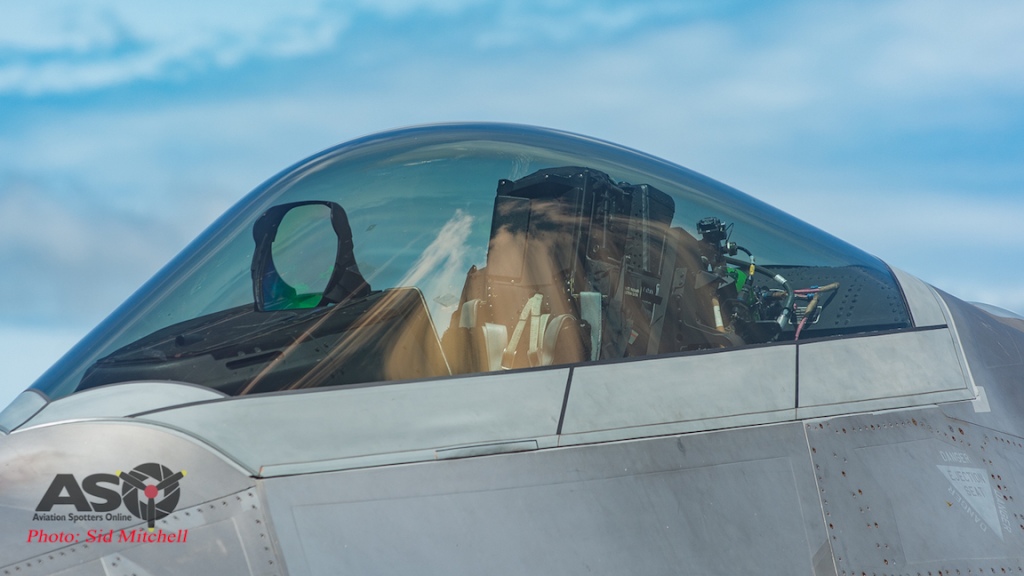



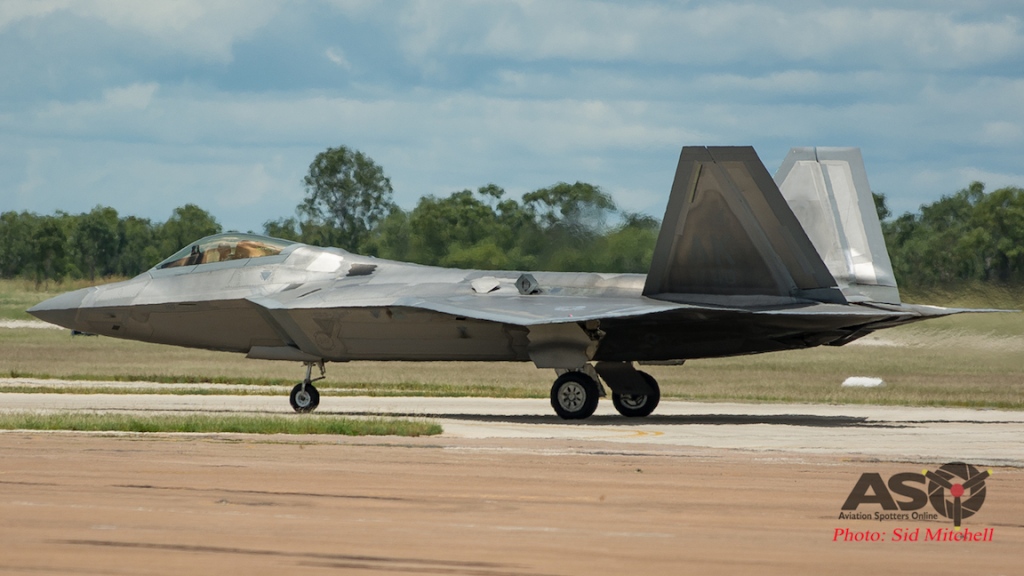
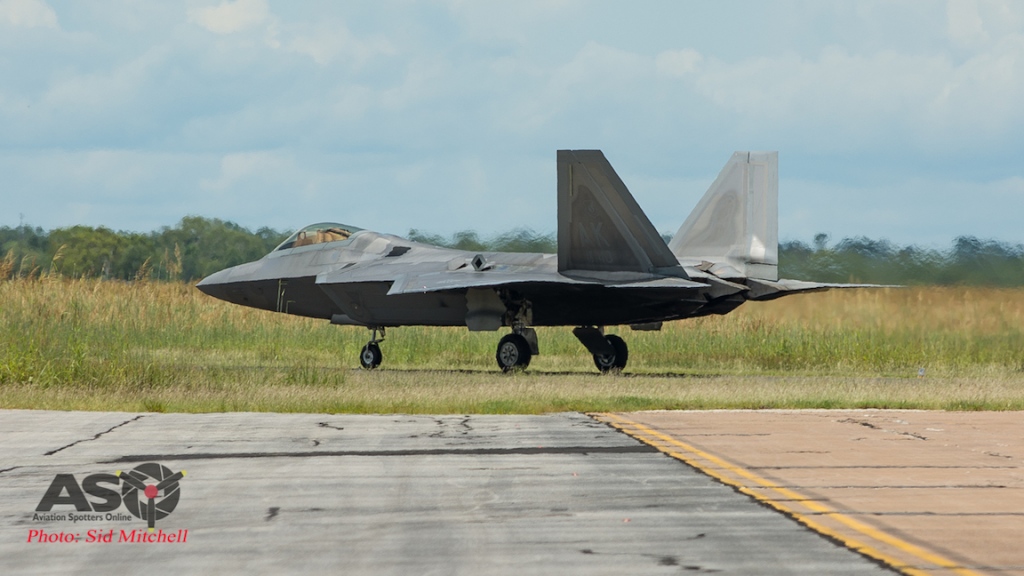

















































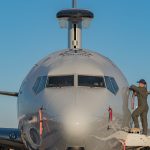



absolutely envy you, had a chance to see a stick of 6 F-22’s when I was in Hawai’i on the way to a UDT Submarine Warfare Conf. that bunch were on their way to japan. I remember they did a slow circuit on the tarmac after they landed and were hosed in salute by some of the airports firies.
the closest I got was about 100m – but even then the memory has stuck and burned in.
half your luck 🙂
Hi Gary, this was my first close up to the Raptor also, I too have that experience firmly cemented in my memory – they really are a unique aircraft both on the groung and in the air. The vectoring thrust nozzles really caught my attention as they are rather odd looking…. but perform such an important function.
My appologies for the late reply…. Sid
This is not the first time that Dice Men (90th AERO squadron) have served in Australia
Correct Scott, in the article I acknowledge that the 90th has been to Australia at least 2 times, back in WWII as the 90th Bombardment Squadron (A20 and B25) and mid-year during Exercise Pitch Black ’87 as 90th TFS (F-4 E/G). It is great to see them here yet again and we hope it isn’t the last time as the F-22 is certainly a crowd favourite at the Avalon Air Show, Victoria…. Sid